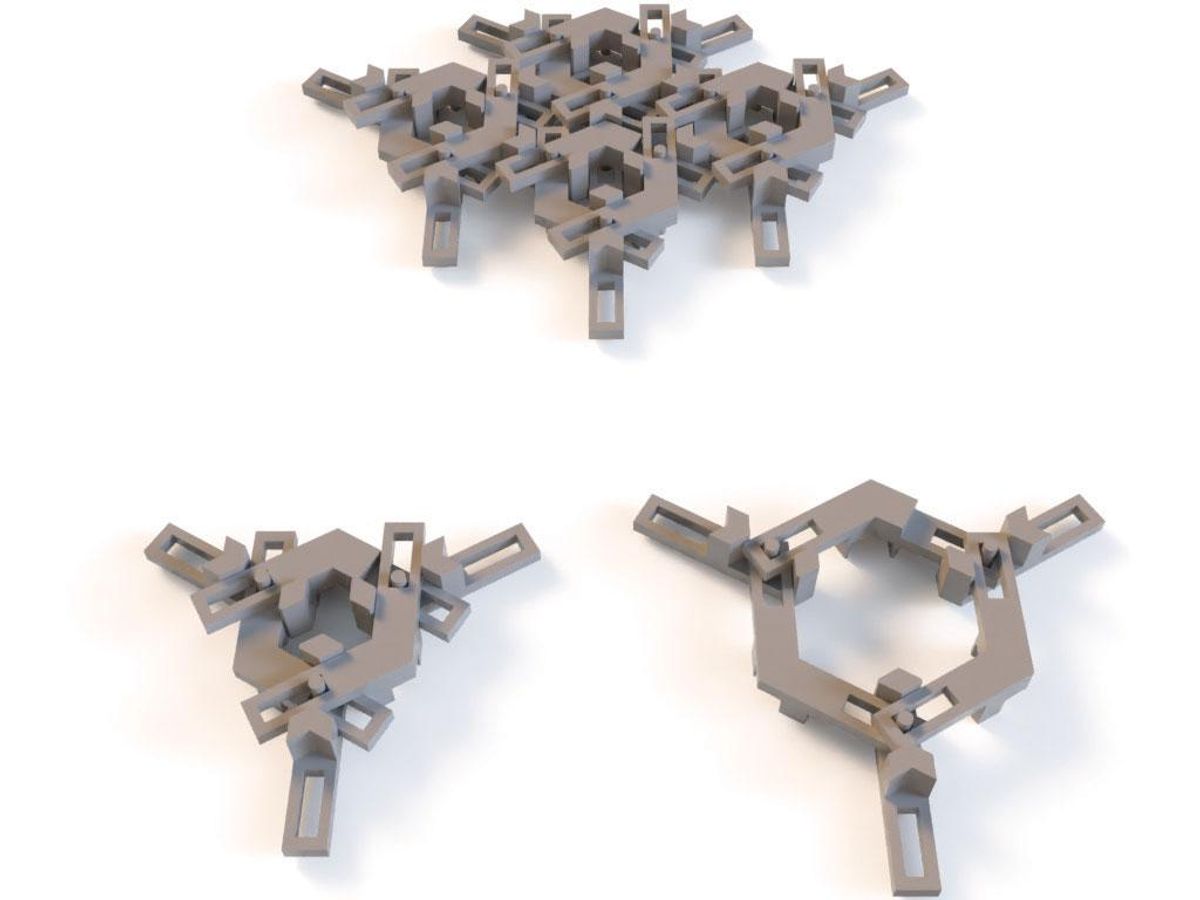Potential future transistors that consume far less energy than current devices may rely on exotic materials called "topological insulators," in which electricity flows across only surfaces and edges, with virtually no dissipation of energy. In research that may help pave the way for such electronic topological transistors, scientists at Harvard have now invented and simulated the first acoustic topological transistors, which operate with sound waves instead of electrons.
Topology is the branch of mathematics that explores the nature of shapes independent of deformation. For instance, an object shaped like a doughnut can be deformed into the shape of a mug, so that the doughnut's hole becomes the hole in the cup's handle. However, the object couldn't lose the hole without changing into a fundamentally different shape.
Employing insights from topology, researchers developed the first electronic topological insulators in 2007. Electrons zipping along the edges or surfaces of these materials are "topologically protected," meaning that the patterns in which the electrons flow will stay unchanged in the face of any disturbances they might encounter, a discovery that helped win the Nobel Prize in Physics in 2016. Scientists later designed photonic topological insulators, in which light is similarly protected.
However, creating electronic topological transistors in which the dissipationless flow of electrons can get switched on and off in topological materials requires dealing with complicated quantum mechanics. By using acoustic topological insulators, in which sound waves can experience topological protection, scientists were able to sidestep this complexity to create acoustic topological transistors.
Still, designing an acoustic topological transistor wasn't easy. "We knew our approach to topological logic could work, but we still needed to find a viable selection of materials where it actually did work," says study lead author Harris Pirie, currently at the University of Oxford. "We took a fairly brute force approach—there was one summer where we were running calculations on about 20 computers at the same time to test thousands of different materials and designs."
Although there were many designs the scientists found that very nearly worked, the designs always seemed to be compromised in some way—for example, "the device was too large to be practical," Pirie says. "Then one day, we finally found a design that met all the constraints, our eureka moment! After that, it was just a matter of designing the ancillary components—the heat converter, the expanding base plate—to make it all work."
The design consists of a honeycomb lattice of steel pillars anchored to a plate made of another substance, all sealed in an airtight box. The plate is made of a material that expands greatly when heated.
The lattice of the device has slightly larger pillars on one side and slightly smaller pillars on the other. These differences in the size and spacing of the pillars govern the lattice's topology, which in turn influences whether sound waves can flow through a set of pillars or not. For instance, at 20 degrees Celsius, ultrasound cannot pass through the device, but at 90 degrees C, it can zip along the edge between the sides. In essence, heat can switch this device from one state to another, much as electricity does so with conventional transistors.
The scientists also designed a second device that converts ultrasound waves into heat. When both devices are coupled together, they form an acoustic transistor that can control the state of another identical transistor, just as electricity flowing in a conventional transistor can toggle other transistors.
The researchers noted these acoustic topological transistors are scalable. This means the same design could also work for the gigahertz frequencies commonly employed in circuitry that is potentially useful for processing quantum information, Pirie says.
"More generally, the control of topologically protected acoustic transport has applications in a number of important fields, including efficient acoustic-noise reduction, one-way acoustic propagation, ultrasound imaging, echolocation, acoustic cloaking, and acoustic communications," Pirie says.
The design principles used to develop acoustic topological transistors could be adapted for use in photonic devices in a fairly straightforward manner, "at least in principle, because the acoustic wave equation mathematically maps onto its photonic counterpart," Pirie says. Meaning: The physics of sound waves and light waves are similar enough that the lessons of a topological transistor of one variety easily translate to a topological transistor of the other kind.
However, "this mapping doesn't exist in electronics," Pirie says, which makes it more challenging to develop an electronic topological transistor from this work. However, "it's still likely we could follow the same general scheme in electronics—we just have to find the right materials to use," he notes.
The scientists detailed their findings online earlier this month in the journal Physical Review Letters.
This article appears in the March 2022 print issue as “Novel Sonic Transistors: The Shape of Tomorrow's Electronics?.”
- Could "Topological Materials" Be A New Medium for Ultra-Fast ... ›
- A Beginner's Guide to Topological Materials - IEEE Spectrum ›
- Strange Topological Physics Could Help Enable 6G Tech - IEEE Spectrum ›
Charles Q. Choi is a science reporter who contributes regularly to IEEE Spectrum. He has written for Scientific American, The New York Times, Wired, and Science, among others.



